My family loves to bird-watch. We have several feeders in our yard and one of us always watches out our front window, hoping to catch sight of a new feathered visitor to our front feeder. Although we put out seed year-round, we always make up a suet feeder (or seven) for the wild birds in the colder months. Want to be kind to your winter birds? Of course you do! So, let them eat (suet) cake!
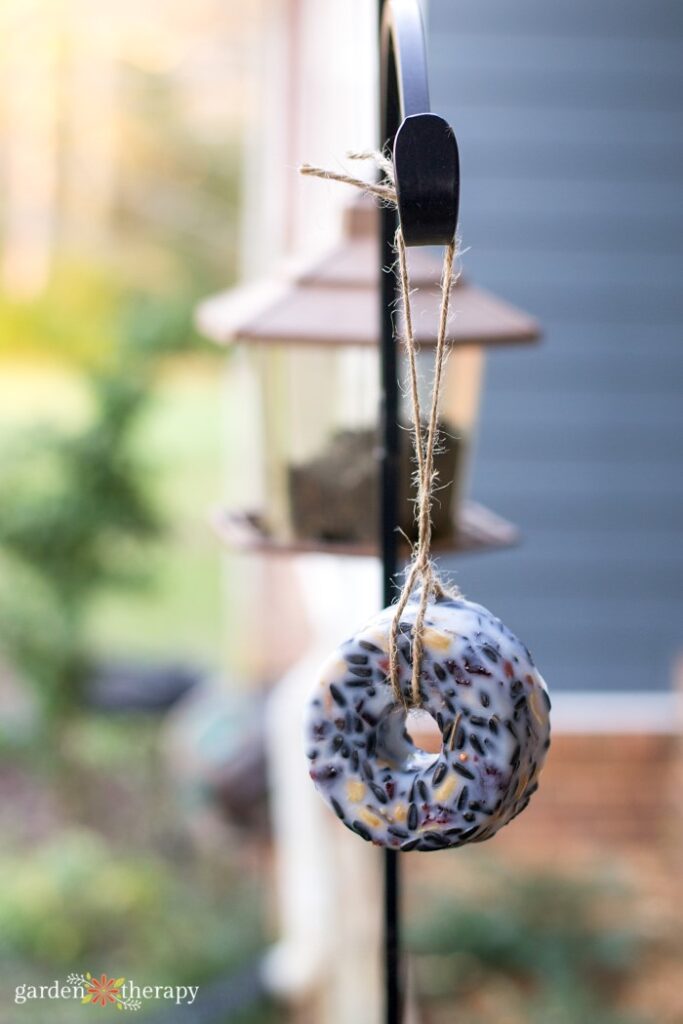
Suet, or rendered fat, is an important supplement for most birds. In the winter, the fat helps add to the bird’s stores of energy and helps them survive the long, cold months. In the spring, the fat helps with the increased energy demands of nesting birds.
Most birds that enjoy suet feeders are clinging feeders such as nuthatches or woodpeckers. However, many birds will partake in a helping of fat every now and then when food is scarce.
This post will cover…
- How to Make a Suet Feeder
- Materials
- Make it!
- Suet Feeder Hanging Notes
- Frequently Asked Questions About Suet Feeders
- More DIYs for the Garden
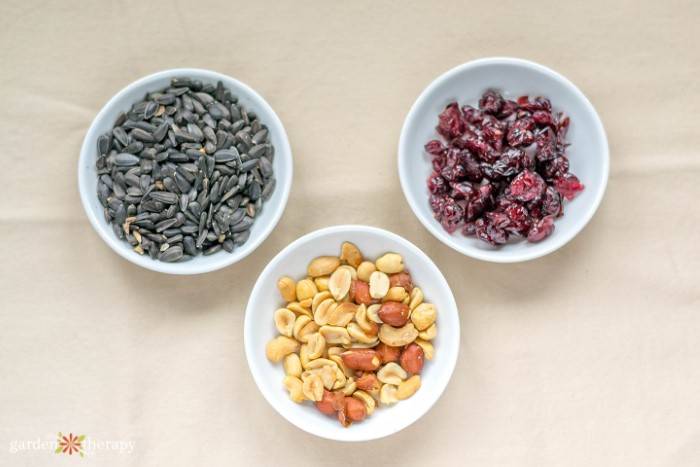
How to Make a Suet Feeder
Making a DIY suet feeder is simple and only takes a few ingredients. You probably already have most of these items at home.
Materials
- Lard or vegetable fat (you need one that will stay solid at room temperature).
- Bird seed
- Dried fruit
- Raw peanuts
- A small bundt pan
- Twine
Make it!
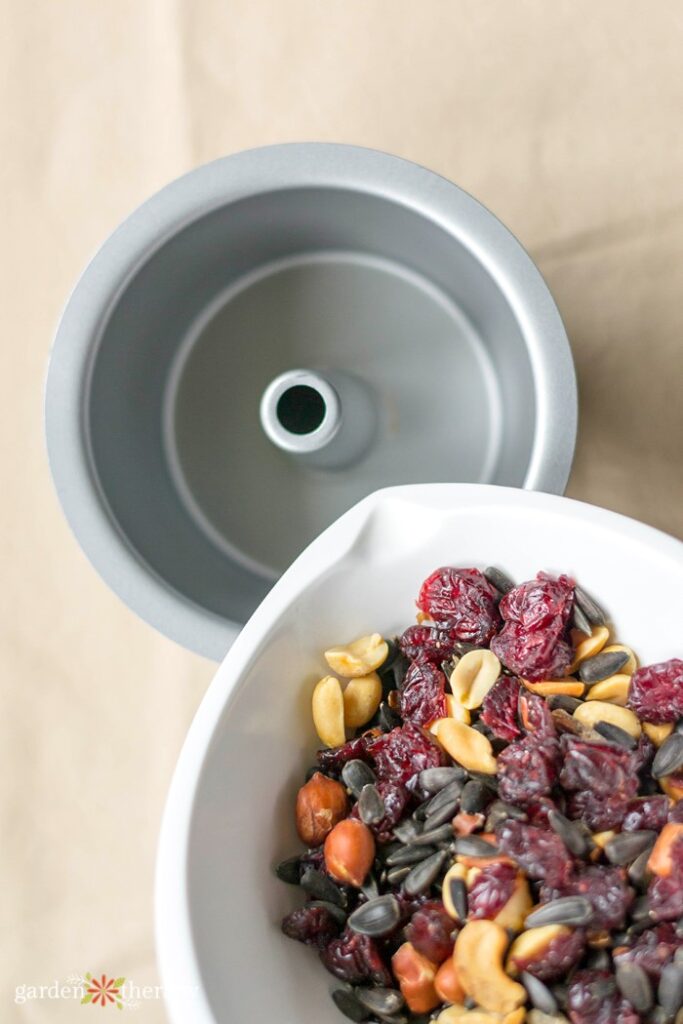
Gather your seeds, dried fruit, and nuts. I used equal portions of each. Mix them together in a large bowl.
Add the seed mix to the mini bundt pan. Fill it about half full. Melt the fat in a double boiler. I used about half a pound of lard for two mini bundt pans.
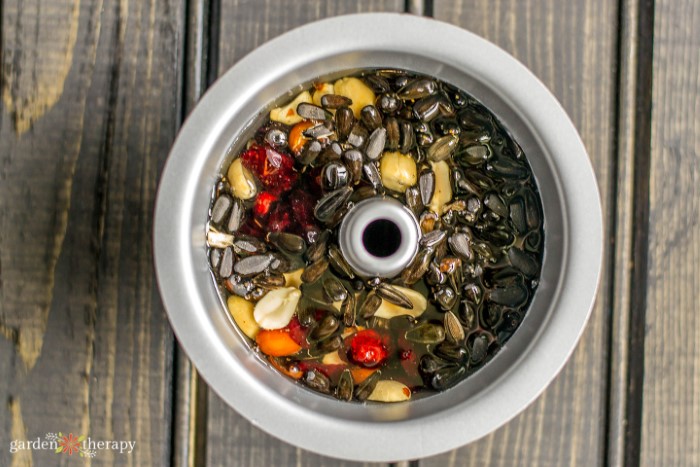
Pour the melted lard on top of the seed mixture in the mini bundt pans. You can let the fat harden at room temperature or pop the pan in the freezer for an hour or so.
Once the fat has hardened, remove the suet from the mini bundt pan. You might have to run the pan under some warm water to help loosen the suet from the pan.

Make a loop with a length of twine and tie an overhand knot at one end. Insert one end through the hole in the middle of the suet and insert one end of the twine through the opposite loop.
Hang your new DIY suet feeder and wait for some happy birds!
Suet Feeder Hanging Notes
Hang your suet feeder at least 5 feet from the ground and in some shade. The fat will stay solid at room temperature, but in warmer temps and direct sun, it can get soft or go rancid (depending on the fat you used).
A great place to hang a suet feeder is in a tree, especially for insect-eating birds like woodpeckers. An added benefit for adding a suet feeder to your yard is that the birds that visit your feeder will also reward you in the spring and summer months by eating the insects in your garden. A win, win for all!
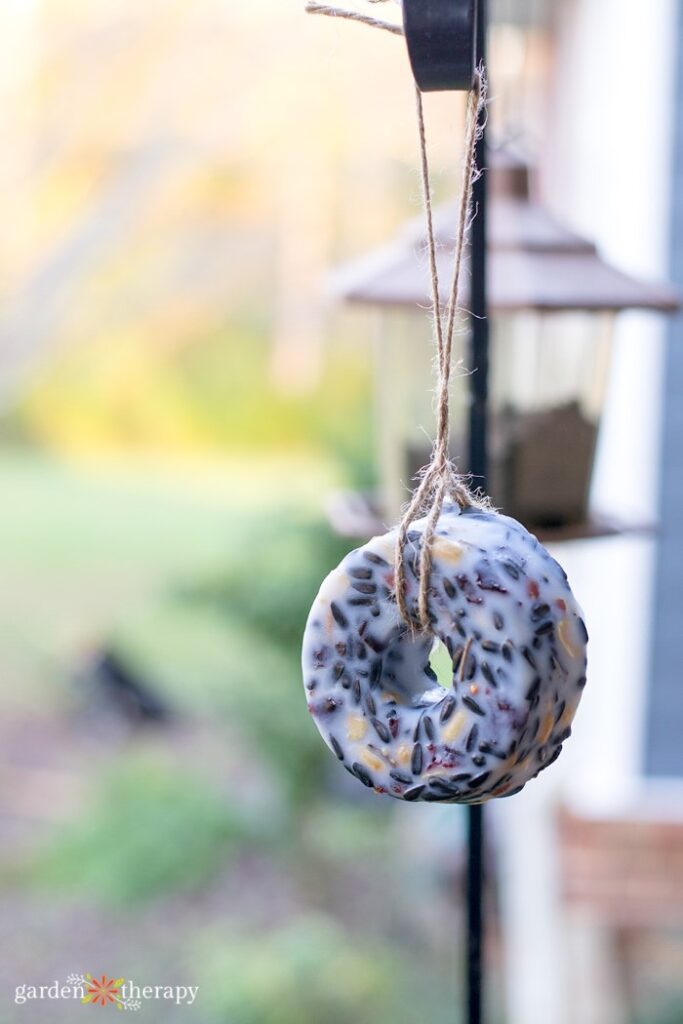
If you’re looking for another amazing DIY suet recipe, check out this one I made in my book, Garden Alchemy. It goes to show that you can get pretty creative in how you hang and make your feeder. The birds aren’t picky so why not make it cute?
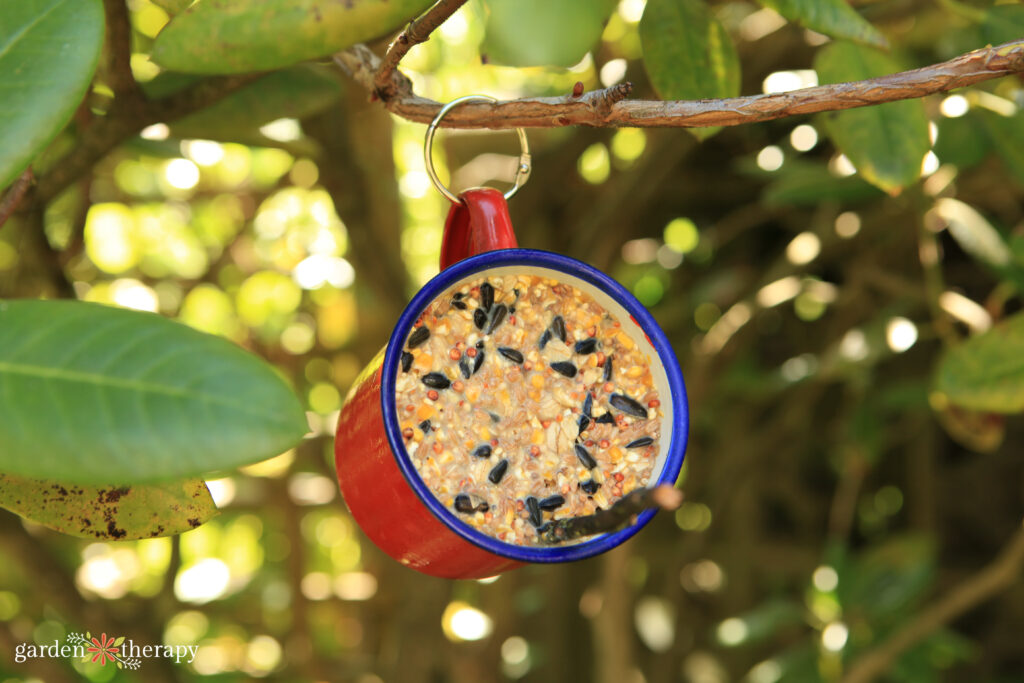
Frequently Asked Questions About Suet Feeders
Suet feeders are solid chunks of bird food made of raw beef fat, birdseed, nuts, and other favourite bird menu items. To eat, birds peck on the suet square, often in a wire cage to help hold it in place. Suet is best used in the winter as the summer sun can melt away the fat.
To keep away squirrels, place it on a bird feeding pole 4-5 ft off the ground with a baffle. It should be in an open area where birds can easily see it and so squirrels can’t jump on it. You can also place it on a tree to attract certain birds like woodpeckers, but keep in mind that squirrels may get to it.
To keep the suet from melting and fresh, avoid sunny areas. You also want to prevent any birds from flying into windows by keeping them away from the house.
Upside down suet feeders help to keep certain birds, such as starlings and grackles, away from the suet to allow other birds the chance to eat. Woodpeckers, chickadees, and other birds will happily eat upside down, but starlings and grackles have a more difficult time doing so. While it won’t keep away all pesky birds, hanging your suet upside-down does help to reduce their numbers.
Technically, squirrels don’t like suet. That is because suet itself is rendered fat. What they do like, however, are the seeds and nuts inside the suet.
Your best bet at keeping squirrels from your suet feeder is by hanging it on a bird feeding pole with a baffle. Place it in an open area where squirrels cannot jump off and onto it and ensure the top is 4-5 ft off the ground.
If you already have rodents in the area, bird food of any kind may attract them. However, it doesn’t act as the pied piper, drawing in rats from the far reaches of your neighbourhood.
The more food that falls on the ground, the more likely rats and mice are going to scavenge for it. The good news is suet is one of the best bird feeding options for creating less waste.
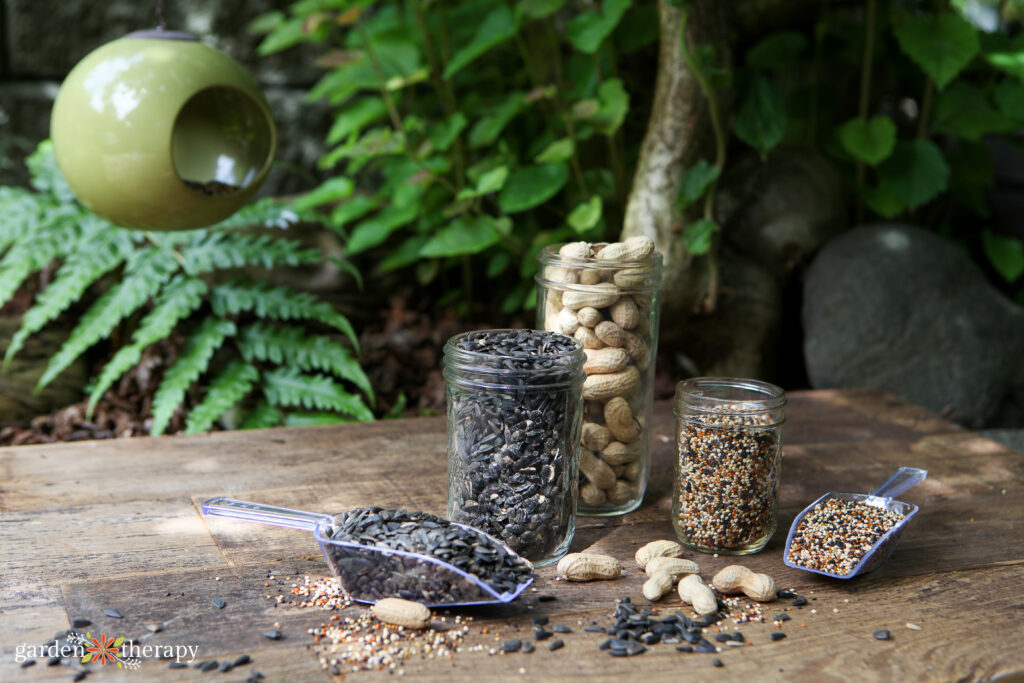

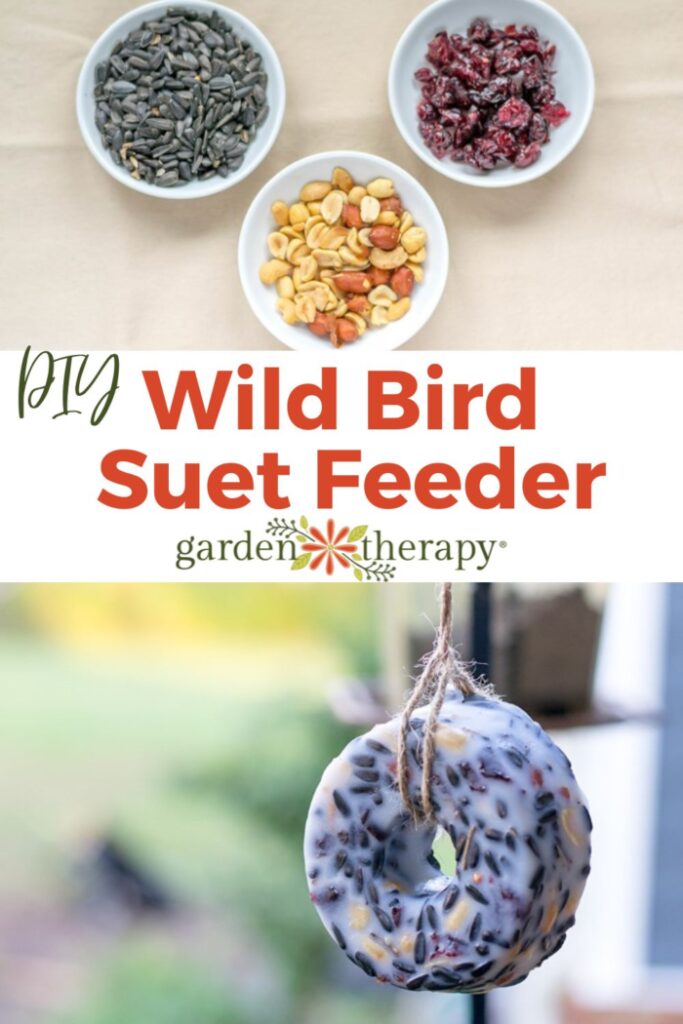
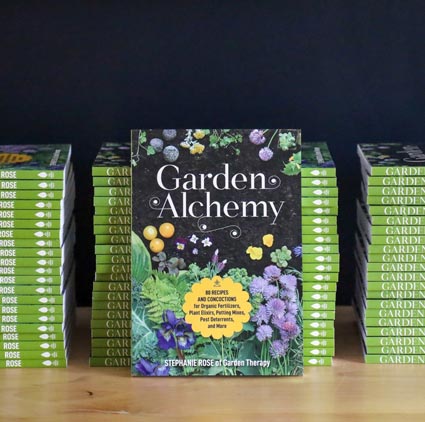


Re: your suet cake recipe-it might do your readers a favour by saying that it would be less wasteful (and your bird friends will agree,also!) that instead of tying your suet cake up with one string(as shown)-you might be better off placing your suet form into a net like piece of nylon,and hanging the whole thing. This prevents losing the whole piece of suet “stuff” due to it breaking up into smaller pieces,and falling to the ground! I know-I’ve tried it! CN
great suggestion!
Can you use bacon fat for making the suet for birds
Where can you source suet?
WalMart has plastic containers of “Armour Star” lard, 4 lbs. and larger, needing no refrigeration and wonderful for mixing bird feeders.
Audrey Comer
I use coconut oil to make my suet, you can get a 60oz container at ocean state job lot for $7. So far the birds (and squirrels ♡) are loving it!
Brilliant!
hi, can you use the same recipe to apply to birdhouses? we have several small wood birdhouses we’d like to decorate with seed. Would you recommend using lard to have the seeds stick to the bird house?